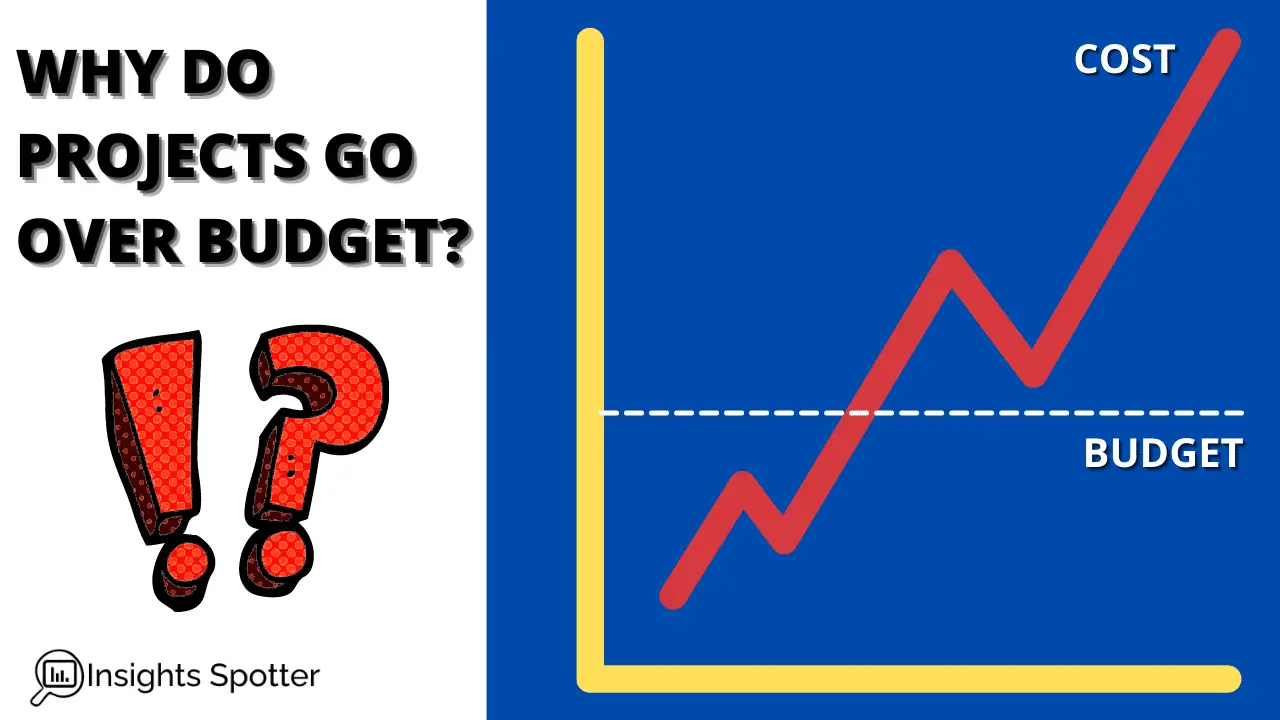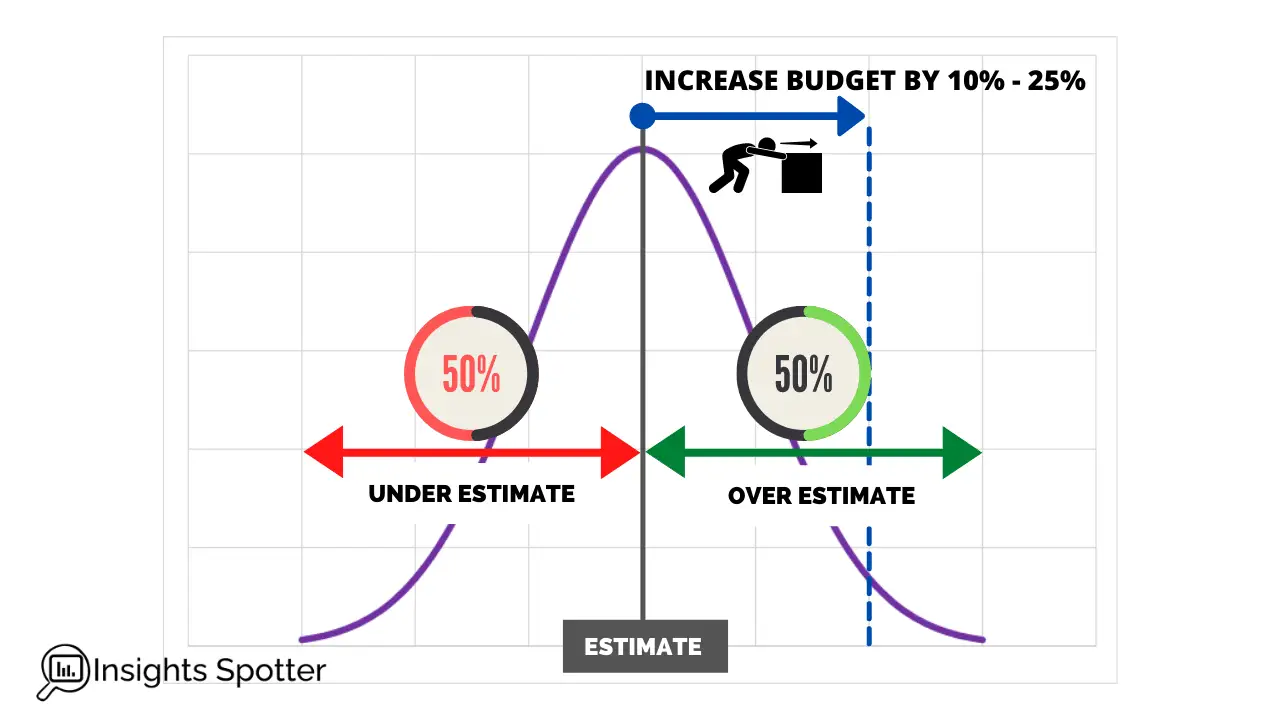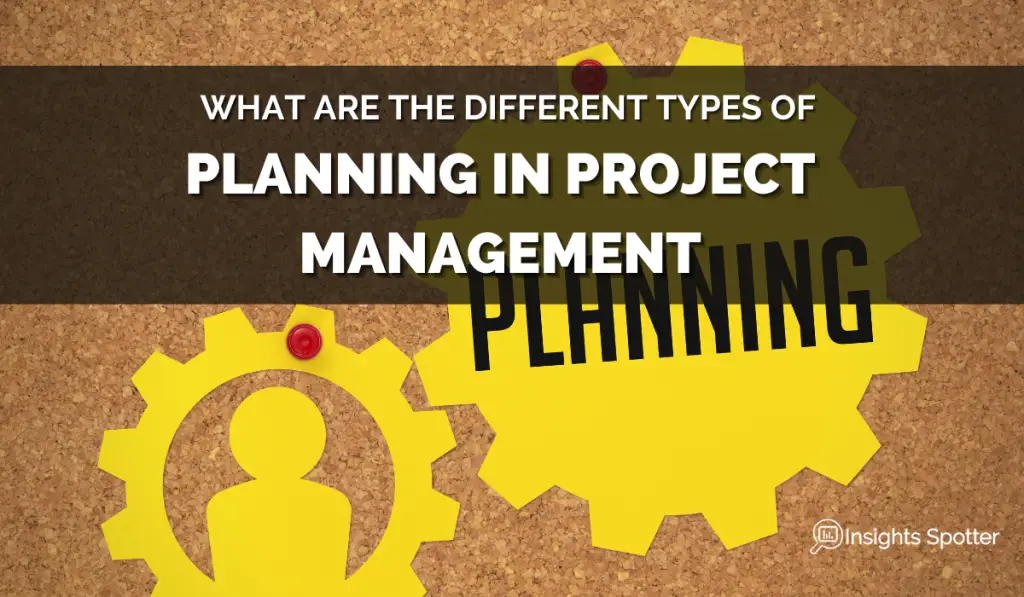What Happens When A Project Goes Over Budget?
There are many reasons why projects are failing, but one of the most sensitive is going over budget. Usually, at the beginning of the year, businesses plan their resources and allocate budgets to projects expected to generate growth or optimisations. When a project goes over budget, things get challenging for everyone involved as finance is scarce, and asking for more is not an easy job.
Projects that go over budget indicate lower control and negatively impact managers, leaders and wider organisations reputation. Plus, increased costs will affect profit margins due to additional expenses, productivity due to opportunity cost and financial stability due to decreased liquidity.
In the post, I will dive into understanding the impacts and reasons for the project going over budget, which would help you spot red flags in your initiatives. Also, explore how we could avoid losing control and running out of money before the end date. If you are interested in examples of the most infamous budget overrun, check out the end of the post.

Consequences Of Going Over Budget In Project Management
At first, running out of money for a project might look like a simple question of asking for more in some management forum. While it is partially true, it comes with ramification to the organisation.
Funds are tight, and management likely allocated most of them to various initiatives to maximise the value. There will be some rainy day funds, but they will diminish the company’s war chest if you use them. The project would typically ramp up spending cash around planning and implementation stages, which means other organisation’s initiatives have started.
Now, let’s explore how precisely a project can impact the organisation when budgets are not managed.
1. Why Over Budget Projects Impact Reputation?
Going over budget will most definitely impact the reputation of the project manager. Plus, if the project is more significant to the company, it will affect the executives’ and the overall business’s image. Losing control of any project resources, including a budget, raises red flags and indicate that the project manager and supporting execs are losing control.
When you are a public company, investors and analysts will scrutinise your resource management, especially if critical initiatives do not meet publicised targets within cost constraints.
Things are not much better if you are a smaller private company, where finance is tighter and projects are more impactful. Private investors, customers and partners will hold you accountable for the company’s success and not just a project.
Thus, if you cannot deliver or address issues in time and fail the project, you will take a hit on your reputation.
2. Why Over Budget Projects Impact Business Productivity?
A business usually plans out resources very carefully for initiatives and allocate specific funds to projects or programmes. Suppose your project is essential and suddenly needs additional funding. In that case, the company needs to take money from other initiatives or business functions, delivering less value overall.
You could argue that you might be able to get just the same value if the project is critical, and it might be true if only your estimates were off. However, if you are running out of budget because of insufficient resources management, you are getting sub-optimal business results.
Plus, you spend loads of time trying to find who to blame, which neither helps solve problems nor gets more value to the business.
3. Why Over Budget Projects Impact Profits?
Let’s say you are a start-up and work on a contract basis with your clients. If you estimate a particular cost and agree with the client, it is generally fixed in the contract. Therefore, if your initial estimates were off or you cannot fit into them due to poor management, you will impact profit margins. In worst-case scenarios, you might even lose money to the business. I have seen the companies that were either losing money or are barely breaking even.
I understand that sometimes companies would compete for market share or expect a more profitable project in the future. However, if it comes unexpectedly, the relationship might be affected, and the contracted firm might diminish the project deliverables’ quality. You see, quality is harder to measure and easier to reduce.
Even if you are not part of a company that works on a contract basis, being less efficient with resources will reduce profit margins; thus, lowering your fan base among business owners.
4. Why Over Budget Projects Impact Financial Stability?
When you run out of strategically allocated funds for your project, you may need to tap into tactical cash reserves. Therefore, reducing companies liquidity and financial capital ratios.
If the project is essential and you do not have cash reserves, you might need to get a loan, which means you will need to pay interest later down the line, again reducing financial stability.
Ultimately, we want to plan our budget as close as possible to what we would need to spend to realise optimal value. Mistakes in cost and budget management would result in an adverse impact on both, project and the business.

What Is Project Cost Overrun?
Before we understand how the project budgets are estimated or set out, we should know how we decide if a particular project has cost overruns.
When you run a project, you pay for various items like staff time, new servers, databases, etc. These tend to add up quite quickly. Although you might have done great work in estimating, you will never be 100% accurate.
Most overruns will be by a small margin and will add up to a total that will be larger than the initially planned and approved budget by senior stakeholders.
On some other projects, where you have sizeable single item investments, you might end up with more significant errors. So, it would help if you had some measures in place, like fixed cost contracts or clauses that protect you against various delays or quality issues, which tend to cost extra.
When you exceed your project budget with various expenses is when you get the project’s cost overrun.
Let’s learn more about various reasons project go over budget.

Why Do Projects Go Over Budget? 8 Reasons
At the highest level, you either did not have a great estimate initially or had excellent planning but did not manage resources. Of course, you could have something in between. True, you could also be affected by unforeseen circumstances, yet we usually have some control over budgets regardless of the situation.
So, keep on reading after red flags to understand how to prevent eight reasons for going over budget. But now, let’s explore why most projects go over budget.
1. Lack Of Risks And Issues Management
I bet for every project manager, it is a dream to successfully execute the exact strategic plan created at the beginning of the project. Unfortunately, it is often just a dream. Risks and Issues should cover those anticipated events where the project could go off track. Changing environments, like market conditions, new insights, shifting business priorities, could impact the project in various ways and present risks. Thus, a previously planned project event might be difficult to achieve.
A project manager should carefully analyse the current operating environment and have prepared a risk and issues response strategy. The approach looks into identifying and addressing material risks and issues.
However, you might have unpredictable or unpredicted risks; those will have the most financial impact and require unexpected costs to fix them. Of course, if your buffer in the plan was low and the risk impact is high, you could have a cost overrun.
If you would like to learn more about the project’s environment analysis to capture your risks and potential issues, check out my post on SWOT analysis for Project Management.
2. Estimation and Planning Errors
Probably the primary reason for cost overruns is the underestimation of future costs and events. We do not know what will happen in the future, but we are trying to predict in project management. And, yes, you will still make errors, either intentional or unintentional. So, higher than planned costs or more prolonged than planned project will likely result in overruns.
Have you been in the situation where you were estimating some costs and hope that everything goes by the plan? I have. Well, it is a bit naive strategy as things always go wrong in initiatives. At the time, a more senior project manager advised me against that, and I was thankful! You need to budget for unknowns if you want to be successful.
You might not even have the necessary information and expertise in a particular project resulting in a level of ignorance. It might be a lack of experience or no comparable projects. Thus, you might not take all the risk factors into account.
The last one is a bit dark. You might want to sell the project to the business and underestimate costs on purpose to make it a viable option. Say you are a manager and would like to get more influence in the organisation by getting a new initiative to automate a department’s process. You know you do not have enough money, but you hope to get additional funding later down the line as a business will have vested interests. Needless to say, that type of practice is not recommended.

3. Unmanaged Scope Change, a.k.a Scope Creep
Any business environment is highly dynamic and often changes unexpectedly, new customers’ preferences, competitors or products. Therefore, stakeholders will often want to include additional scope elements, more features, different deliverables, increase quality in the middle of the project to adjust to changing environments.
While on the one hand, it is great to be relevant and meet market demands. On the other hand, it poses a challenge to projects and project managers as new scope increases time and costs. The unchecked growth in scope is also known as scope creep. The word sends shivers down the spine for any project managers…
Unchecked means that you do not manage incoming new requests and do not adjust your time and budgets. If you continue in that direction, you will end up with a pile of deliverables with no time or money to deliver them.
If you would like to learn how different project constraints interlink, check out my post on project constraints.
4. Poor Project Management Performance as a Lack of Experience
None of us is perfect, but with experience, we become more refined in our craft. Unfortunately, we all started fresh at some point in project management, and part of gaining experience also means that we sometimes make mistakes. Hopefully, in most cases, these are only small ones, but they could kill the project if they become significant issues.
One reason where an inexperienced manager could underperform on the project is resource coordination. There are many moving parts, and you need to learn to plan everything, so all come together at one point in time to complete the task.
Insufficient project team skills, technology and collaboration, could really pull back the progress of the project. The team will move slowly due to a lack of technology and poor cooperation and likely to make errors.
Of course, if something goes wrong, the team and manager need time investigating, correcting issues, and spending more money or time on the deliverables to pull everything back on track.
5. Project Design Issues
There is a little bit more to project management than just planning timelines or budgets. Issues with any below items will impact the project’s cost.
- You will need to think about frameworks or methodologies to use.
- The manager will need to understand where he/she will get the resources.
- What is required project governance and support? Or what is the actual deliverable?
Say you choose Waterfall methodology for the project in an environment where things are moving very fast. Waterfall follows a linear approach and not very suited to adjust well to changing requirements. As a result, you might end up with loads of change requests, which would require additional time to consider and progress. Thus, the project will incur additional costs; performance will decrease and make you have a cost overrun.
6. Lack Of Budget Accountability
If you have established a project management function with PMO and best practices, you probably won’t have this problem.
However, if you are a young organisation just trying to find a footing and work in a collaborative spirit where everyone is responsible for everything, this might be for you.
It does not matter how good your plan or budget is if no one is responsible for the successful execution. In established companies, that person is a project manager, but it could be a staff member who had a great idea in a younger organisation. If budgets are not tracked, then they will most likely go off track.
7. Unexpected Project Changes
There could be other changes in the project that do not relate to scope creep. For example, you might have a change in staff or management of the organisation.
Say your sponsor leaves the company, and the new sponsor needs time to catch up with the current situation. Now, you need to spend extra time trying to get everyone aligned, and it might take additional time and costs.
Or you could have a decrease in a particular essential resource like available servers to implement calculations. If you could not use existing servers for your project and need new ones because they have been prioritised, your project cost will go up.
8. Non-Existen Coordination
If you went through all the effort to define the scope and plan but did not get everyone on the same page in the team, you would still be not performing.
Imagine if team members do not complete their tasks in time, and other parts of the project are dependent on their success. Or that you have to member of the team potentially completing the same job.
In both cases, you end up with a project that is not optimising resources, which will result in additional costs.

How To Prevent A Project From Going Over Budget?
We have talked a lot about why an overblown budget is not great and about the main reasons why it may be happening—time to take things into our own hands and start doing something about it.
Here we will look into nine preventative measures to avoid these situations where costs increase above expectations.
1. Manage Your Risks And Issues
If you would like to avoid unexpected risks and issues, you need to have an excellent structure to manage these. Managing risks and issues means identifying and preparing strategies to resolve or reducing them.
To identify internal or external risks, you can use strategic planning tools like PESTLE or MOST Analysis (If you like to read more about those, check out my post on the two tools) to complete comprehensive risk and issues analysis.
To mitigate risks, you can focus on strengthening your weak with your strong positions. Say you have a great partnership with the IT technology company, but you do not have any staff that are really technical. You could offset your lack of skills with the support of your partnership.
Mitigation does not always mean that you need to do something; you can accept it if the impact is low. Yet, in that case, your budget should not be affected.
Although it is tough to predict or even influence external risks, you should still pay attention to them to an extent. Your reaction time to adverse event will be much faster if a clear mitigation plan is in place. If you are lucky, you might see some opportunities that can actually save you some money as well.
Check out the post on SWOT analysis for Project Management.
2. Great Planning And Estimation
There are several ways you can estimate in the project both time and money. Generally, a project manager will use one of these below to complete the estimation:
- Bottom-Up: Estimating small tasks and then add them up
- Top-Down: Estimating Large task first and then split them up into smaller
- Analogous Projects: Use a similar project as a basis and adjust to unique circumstances in your current project.
- Parametric: Using data from multiple projects for a specific task to evaluate the most likely value for your project task.
- Three-point: Using three scenarios, best, worst, and average, to consider several possibilities.
Analogous Projects
Let’s start with similar projects. If you have a project that your organisation has worked on before, you can use it as a base and then adjust various cost elements to match your project needs. If a project manager who works on the previous project is still available, you might use their expertise to consult on some pain points.
Suppose you had a project that was installing a new database. The overall cost of the project was around £250K. Say your project will have only half of the capacity. You would not want to just half £250K, but make more considered adjustments after planning. Your staff cost might be just the same regardless of server capacity, but servers might have a lower fee.
Great Planning
Regardless of whether you are looking to estimate using bottom-up or top-down, you need to understand the project’s essential building blocks.
What helps with planning the project and considering each element that will need to be completed is the work breakdown structure (a.k.a. WBS). It is just a fancy way to say that we will list all the tasks and group them under meaningful headers.
Now, we have grouped list of tasks; we can start considering when each need to be completed, which would result in us creating a Gantt Chart; Then, we can think about using various resources. Be careful! People or even machines never work 100%, so we should have some buffer and assume 80%-90% efficiency in our estimates. Sometimes, there might be other organisation’s constraints that would limit our efficiency even more, and we need to consider them.
After we understand time and resources, we can consider each larger groups’ and then split costs into smaller tasks later (top-down) or start with small jobs and add up to more significant deliverables (bottom-up).
There are so many things to consider when working through your plan, like time, resources, costs, etc. Therefore, a project manager can easily miss items. In the planning stages, we could encourage the project team to collaborate and express different perspectives. As a result, they would be scrutinising planning and estimation outputs. The goal is to increase estimates quality and consider multiple likely risks.
Hire Expert To Estimate
If you would like to get big guns out, you might want to consider experts support. Maybe your project or organisation has enough resources to hire consultants who have done estimates on countless other similar projects to help you out. It could make sense where risks are very high and the project is significantly larger. So, having an expert estimating for you is really reducing the risk of making the wrong decision or trusting the “gut feeling”.
Also, an expert will be an independent party with limited biases. They are paid to provide quality insights and information; thus, their interest is to ensure high-quality estimates.
Increase Estimate Accountability
“Accountability” stems from late Latin accomptare (to account). People are afraid of this word as it is typically associated with negative elements. But what we are really saying here is that we want someone to be responsible for both successful or not so much estimates of the project. That person is usually a project manager.
Yet, we could also agree where will the additional money come from if estimates are incorrect, ensuring that affected areas are vested in the estimation process and will collaborate with the project manager or even challenge him/her.
Thus, additional controls, collaboration and clear accountability will encourage involved parties to be more attentive.
Continuously Forecasting
Finally, after you have completed your initial estimates, you would not want to stop there. On the project,
things are changing fast, and you need to keep an eye on items that could affect project costs.
Continuously considering project cost impact could help you mitigate uncontrolled increases or dictate when is a good time to inform stakeholders about budget’s changes.
3. Addressing Scope Change Head On, a.k.a Scope Creep
There is no other way around this but to have rigorous but transparent controls around scope and change management. You should have established a change management process that is understandable by all critical stakeholders in the project’s initial stages.
The process starts with defining and approving the initial scope elements at the beginning of the project; setting these early will simplify change decisions later. The project should have a forum where change can be presented, discussed and prioritised; thus, everyone has a chance to express their views.
After the meeting, we should have a straightforward approval process for implemented additional changes as it will likely involve allocation of other resources like time, budgets, staff.
If you would like to reduce proposed changes in the first place, you should keep your project lean and mean. Try concentrating on essential parts of implementation to deliver business objectives. The more complexity you introduce, inevitably you end of with more scope items on your hands and more subsequent changes.
If your business is working for a client project, you should use the approach above. When approving changes client will likely need to commit to those with additional funding. As you might know, when operating a business, wanting something is quite different from paying for it. Better to lose a client than go broke because you did extra work.

4. Addressing Poor Project Management Performance
There is quite a lot when it comes to having an excellent project performance. I will cover those that are more linked with costs in the business, but other aspects will indirectly affect projects. When it comes to performance, we want to make sure that we have and maximise the right resources.
Of course, you would like to start with project objectives, scope and plan. Then, you can begin to understand what and where different resources will fit in the project. You might want to create a separate sheet for resource management and make sure you have everything you need. For example, you might understand that you do not have the right data analysis skills in the team. Eventually, you will want to communicate your requirements and considerations with a broader group and other stakeholders.
Although you can be black and white with the technology required to complete the project, it will need more finesse and leadership skills when working with people. The best advice I could give you is to listen, be respectful, lead by example and be very clear. By just listening and taking into account other peoples opinions and views, you will start building collaborative culture as people will feel valued and their opinions heard.
Of course, you will need some monitoring and controls tools to ensure that you are still on track with resources and people management after you start executing the project. Then you will go through the process of fine-tuning your plan and approach.
If you would like to learn more about project management, check out my extensive post on the subject: Project Management Guide.
5. Fixing Project Design Issues
When selecting project management methodology, you should not just jump on either Agile or Waterfall. First, you should consider what type of project you have. Some projects are more suited for Agile and some for Waterfall.
- If your project has strict deadlines, a fixed budget, or clear objectives, then Waterfall might just be the suitable option.
- Suppose you do not know precisely how the final delivery will look and cannot prepare a plan. In that case, you might be better off with Agile type of frameworks, which is more suited for various adjustments.
If you would like to read more about when not to use Agile, check out my post: When Not To Use Agile.
Also, you would like to set up project governance with the right level of stakeholders. So, you have the right level of support at each of the three levels:
- Project – Stand-Ups or equivalent
- Department – Working Group or eq.
- Organisations – SteerCo level or eq.
If you have never heard about SteerCo, there is a post for that on my website.
6. Creating Accountability For Budget
When new initiatives are proposed, you would like to have a sponsor who will see the project through. In the process, you would like to agree on the budget source and appoint an individual who will keep an eye on the budget.
Often, it will be a project manager; however, you could also have business partners who may take such responsibility for multiple projects. The key is just to know who will ultimately be accountable for keeping the budget updated and within targets.
7. Dealing With Unexpected Project Changes
There are many potential unexpected changes in the project. One change that happens more often than you hope is a change in sponsorship. So, arranging great summary material and walking through main deliverables, background and key achievements will help your new sponsor get a picture.
He/she may end up changing the scope for the project as priorities might be different. Take care when you complete the analysis to ensure new changes do not considerably impact time or costs.
If you had issues with resources, you would like to have a great plan set out for the project’s required resources in the beginning. If some disappear or are not available, you know what part of the project is affected and can discuss in forums like SteerCo and Working Groups to either acquire new resources or agree on time delays.
If you actually get unexpected change not covered before, do not get lost. All projects are impacted by six constraints time, cost, scope, quality, resources and risk. Any change will affect one or multiple of these constraints. Understanding what is impacted will help you have more constructive discussions with senior stakeholders and negotiate for additional resources or agree on the action’s plan.
If your project expects to see many changes due to changing market conditions, you should probably go for Agile frameworks like Scrum or Kanban.
8. Ensuring Coordination and Collaboration
First of all, you should have a clear project plan with assigned resources for each task and timelines. Paying additional attention to optimising the resources will help you ensure they are not sitting idle.
Yet, planning is not everything. You should also hold a Role & Responsibilities meeting. The meeting aims to ensure individuals understand their roles and how it fits in a larger picture. The key is to have clear expectations from both sides.
Eventually, you need to arrange stand-ups and encourage the team to solve problems together. In extreme cases like overrunning budgets, you might want to have full workshops. All of these will contribute to the culture where collaboration is celebrated.
9. Build In Contingency Reserve or Buffer
Finally, we have left probably the most crucial remedy for the cost to last. If you get your estimates wrong at the beginning of the project and still run the project effectively, you may still not hit the target.
It is tough to be specific with cost estimates, especially at the beginning of the project. Therefore, we would like to leave some buffer in our calculations.
Simple Buffer
If you would like to use the thumb approach rule, just add 10% of cushion on top of what you estimated. For some lucky project manager, it could be as high as 25%.
Visual Bell Shape Buffer Consideration
Suppose you would like to go more advanced; Consider the following thought process. You have estimated a specific budget and scrutinised it with stakeholders and the team. Let’s assume you got lucky and made your estimates very much on point; still, you have only a 50/50 chance that it will be precise enough. Thus, you also have a 50% chance you will miss your target altogether, and that is gambling. Adding 10%-25% on top of your estimates will move you over the 50% mark and increase your chance to hit project budget targets.
However, often you will only get 10%, but at least that is no longer gambling. See the bell shape below. So, do not be afraid to have difficult conversations initially; otherwise, you will have to have those at the end. Also, you will need to return the buffer if you did not use it.

Contingency Based on Each Wrokstreem Separately
Eventually, you might want to consider each workstream separately regarding the risk associated and potential impact. If you believe that one part of the project is super clear, you can add only 10%. However, if another part of the project is quite unknown, say you are building a totally new product with new technology, you might want to go as high as 40%. Then just add up all contingencies.
Note! If your stakeholder press you to give an exact number for the budget, do not go with the best-case scenario. Because for the best case, you will provide many caveats and then a number X. Well, the stakeholder will hear “bla, bla, bla” amount X and hold you accountable. Plus, if you need more time to have a relatively good estimate, do not give any number and ask for a bit more time.
If your project budget is already overrunning and you need to fix it, check out my post on the steps you need to take: A Project Is Over Budget.
Budget Overrun Conclusion
You can overrun with a Project budget for various reasons, which some will be within your controls. Projects are usually more substantial improvement items in the business and could impact reputation, financial position.
Thus, you should monitor red flags and consider preventive actions to limit the impact or ensure that your project goes as close as possible to agreed costs’ estimates.

World’s Most Infamous Budget Overruns
| Project Name | Original Budget | Final Budget | Percentage Overrun |
|---|---|---|---|
| Olympic Stadium | £280M | £700M | 150% |
| The Shard | £350M | £435M | 24% |
| Edinburgh Trams | £545M | £776M | 42% |
| HS2 Phase 1 | £24BN | £51.25BN | 114% |
| BBC Headquarters | £991M | £1.01BN | 2% |
| Wembley Stadium | £757M | £1BN | 32% |
| Three Gorges Dam | $8.35BN | $37BN | 343% |
| Ryugyong Hotel | $750M | ||
| The MOSE Project | $1.7BN | $8.1BN | 376% |
| Montreal-Mirabel Airport | $416M | ||
| Sagrada Familia Cathedral | €374M | ||
| The International Space Station | $17.4BN | $160BN | 820% |
| The Millennium Dome | £758M | £789M | 4% |
| The Chunnel | £11.7BN | $21BN | 80% |
| The Big Dig | $2.6BN | $14.8BN | 469% |
| Panama Canal Expansion | $4.3BN | $5.3BN | 23% |
Subscribe to our newsletter!
 ABOUT ME
ABOUT ME
I am an experienced ex. Business & Data Analyst and now a Project Manager with multiple years of experience gained in several international companies.
These days, business problems require data crunching and telling stories to make the right decisions. Simply put, business stakeholders need insights into their projects and deliveries.
This is where I come in. I have learned and applied Python, Power BI, SQL and Excel to analyse and present data. Also, I gained experience in Project Management and Business Analysis. So, I can not only spot insights but execute business decisions. Moreover, I can teach you as well. Read More
Best Books








Latest Blog Posts
- Navigating Project Management in a Matrix Organization: Challenges and Solutions
- Using Artificial Intelligence’s Power in Agile Project Management
- Sustainable Project Management: Trends, Tools, & Strategies
- Unlocking Strategic Value: How NIST CSF 2.0 Shapes Project Choices for Better Outcomes
- Cybersecurity Project Management: Protecting Your Digital Frontier
- What are the Different Types of Planning in Project Management?

Need Project Manager’s Help!?
Check out the Fiverr marketplace if you do not have time to run your own projects or just need extra help. They do have multiple project professionals, including project managers. Maybe you will find just the right fit to take some burden from you. I have used Fiverr in the past. The prices are also not too bad. If you seek PM via the corporate route, it will be easily 5x the price.

